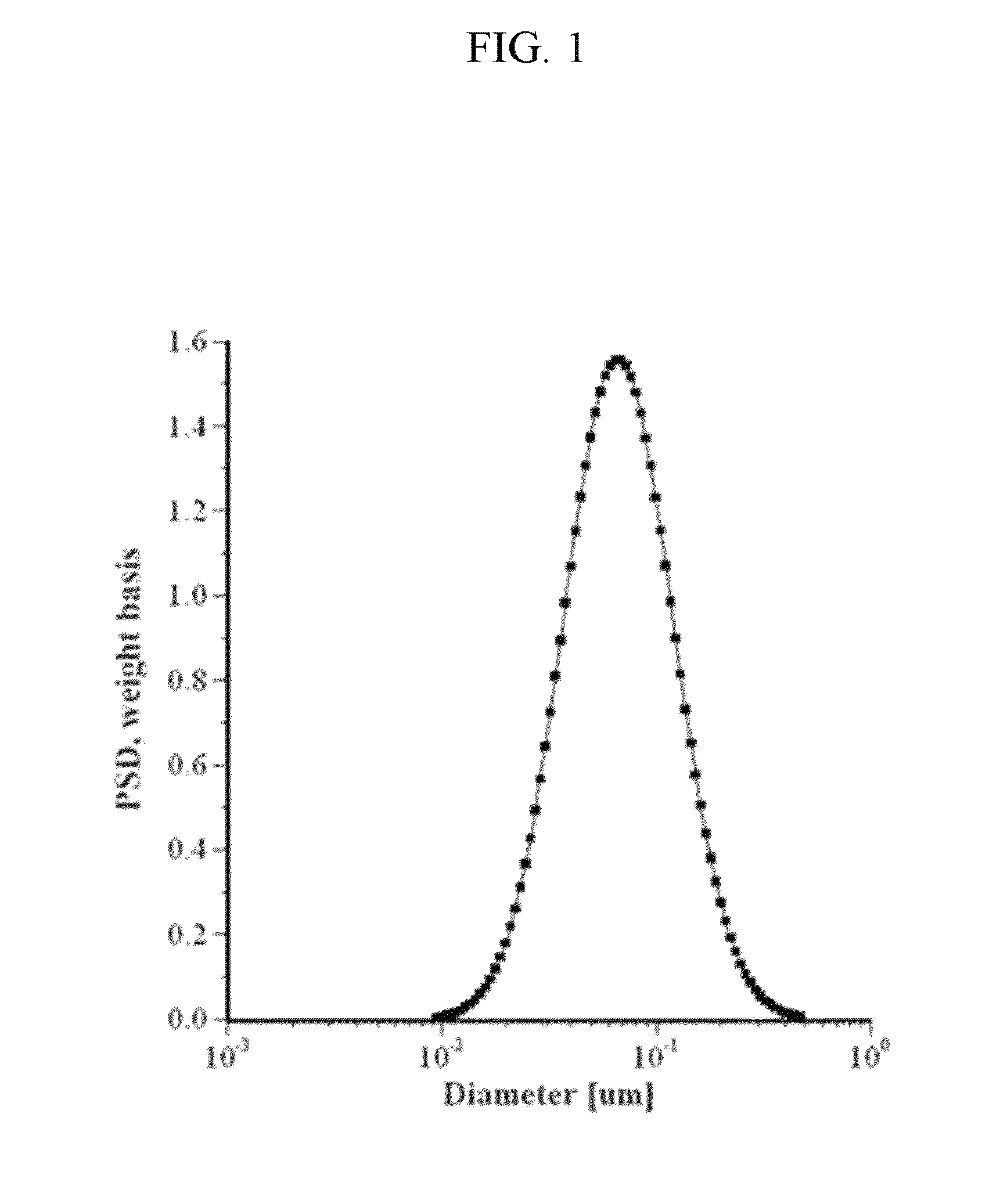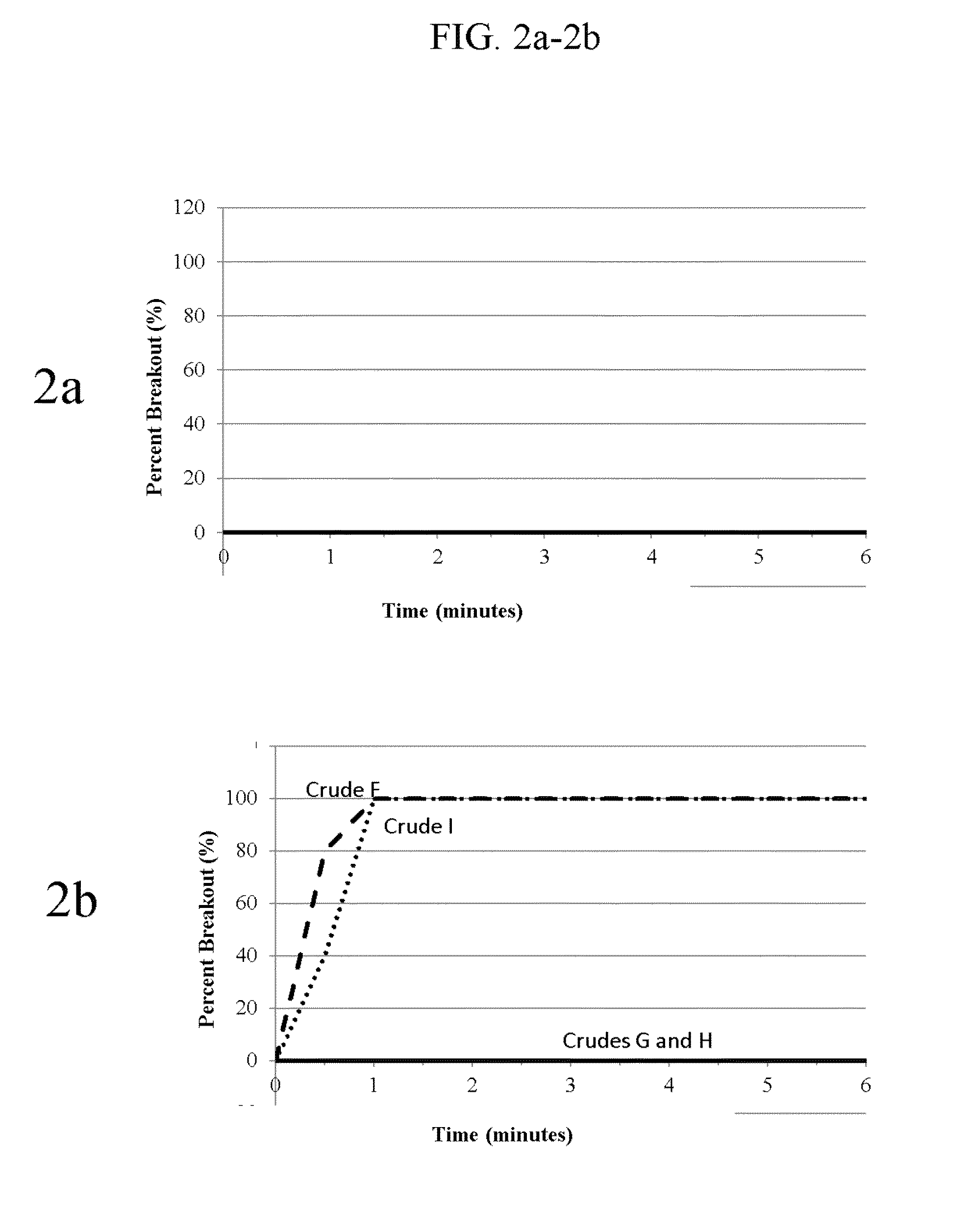Demulsifier composition and method of using same
a demulsifier and composition technology, applied in the field of demulsifier compositions and methods, can solve the problems of increasing heat capacity, natural non-miscibility, water to form droplets within the bulk oil phase, etc., to enhance the fluid recovery and relative permeability of fractured subterranean formations, remove unwanted deposits, and clean out wells
- Summary
- Abstract
- Description
- Claims
- Application Information
AI Technical Summary
Benefits of technology
Problems solved by technology
Method used
Image
Examples
example 1
Preparation of the Microemulsion-Based Demulsifiers
[0048]This example provides representative formulations for the demulsifiers of the invention.[0049]Sample 110-2: 3% alcohol ethoxylate (C12+3EO); 5.2% EO / PO copolymer (water dispersible); 2.7% ethoxylated C8 alcohol; 2.7% EO / PO copolymer (water soluble); 0.1% linear alkylbenzene sulfonic acid; 7% alkoxylated polyethyleneimine (demulsifier); 1.3% polyethylene glycol; 40% propylene glycol; and 38% water.[0050]VX10540: 3% alcohol ethoxylate (C12+3EO); 3% EO / PO copolymer; 2% dioctylsulfosuccinate (DOS); 3% tridecyl alcohol ethoxylate (C13+9EO); 9% cross-linked EO / PO block copolymer (demulsifier); 10% glycerin; 30% IPA; and 40% water.
example 2
Particle Size Distribution
[0051]FIG. 1 shows the particle size distribution for one embodiment of the microemulsion-based demulsifier of the invention. Sample VX10540 (3% alcohol ethoxylate (C12+3EO), 3% EO / PO copolymer, 2% dioctylsulfosuccinate (DOS), 3% tridecyl alcohol ethoxylate (C13+9EO), 9% cross-linked EO / PO block copolymer, 10% glycerin, 30% IPA, 40% water). It can be seen that the particle size distribution spectra for VX10540 shows a unimodal particle size distribution with an average droplet size of 0.0776 μm and a median droplet size of 0.0655 μm. This result confirms that VX10540 is indeed a microemulsion system. Due to the presence of very small droplets (0.01-0.5 μm), microemulsions are transparent or translucent.
example 3
Emulsion Prevention Test
[0052]This test was performed to compare the ability of various demulsifiers to prevent emulsion formation when contacted with residual oil. Various demulsifiers were added to 25 ml of 4% KCl with pH adjust to 11. Twenty five (25) ml of 4% KCl containing the demulsifier was mixed with twenty five (25) ml of oil obtained from West Texas and blended at 14,000 rpm in a Waring Blender for 1 minute to emulsify the two liquids. The emulsion was then poured into a 6-oz glass prescription bottle (an industry standard for this test) to observe the water breakout from the emulsion, water quality, interface quality, and wettability. Table 1 shows the results using commercially available samples along with the results using the sample 110-2 from Example 1. The results show the present invention (sample 110-2) is superior to currently available commercial samples (Products A and B) with regard to quicker water drop out, sharp interface, clean water, and excellent wettabil...
PUM
| Property | Measurement | Unit |
|---|---|---|
| median droplet size | aaaaa | aaaaa |
| median droplet size | aaaaa | aaaaa |
| pH | aaaaa | aaaaa |
Abstract
Description
Claims
Application Information
 Login to View More
Login to View More - R&D
- Intellectual Property
- Life Sciences
- Materials
- Tech Scout
- Unparalleled Data Quality
- Higher Quality Content
- 60% Fewer Hallucinations
Browse by: Latest US Patents, China's latest patents, Technical Efficacy Thesaurus, Application Domain, Technology Topic, Popular Technical Reports.
© 2025 PatSnap. All rights reserved.Legal|Privacy policy|Modern Slavery Act Transparency Statement|Sitemap|About US| Contact US: help@patsnap.com



